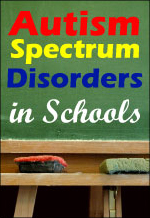New Jersey-licensed Speech-Language Pathologists (SLPs) and Audiologists renew every 2 years on October 31st (odd years). 20 hours of continuing education (CE) are required to renew. 10 hours are allowed from ASHA-approved online or home study courses.
Professional Development Resources is approved by the Continuing Education Board of the American Speech-Language-Hearing Association (ASHA) to provide continuing education activities in speech-language pathology and audiology. See course details for number of ASHA CEUs and expiration deadline. Who is eligible to earn ASHA CEUs?
Continuing Education FAQs:
What happens if I am audited for my continuing education (CE) hours?
You will be asked to send in documentation of your 20 hours of continuing professional education. This is required every two years. A form is available on the board website to help you organize your activity information. You must have documentation that verifies your attendance at an approved continuing education program. You can provide to the Committee a certificate of attendance or a statement from the instructor. Please remember that only 10 of the 20 hours required may be completed online.
When do I need to start obtaining CE credits?
Your license to practice audiology or speech-language pathology must be renewed every two years. At that time you will be required to document 20 hours of continuing professional education units if you were licensed within the first year of the licensing period; 10 hours if you were licensed after the first day of November of the second year of the licensing period or zero hours if you were licensed within six months of the expiration date.
Can CE credits be carried over from one renewal to the next?
Yes. If you complete more than the necessary 20 hours, you may carry-over a maximum of five hours if those hours were earned in the six months prior to renewal.
How long do I have to maintain the continuing education records in my files?
You must retain the records for at least five years following the renewal period.
How do I know if the course that I am taking has been approved as a valid continuing education credit?
Continuing professional education units must be related to the practice of audiology or speech-language pathology. The units (hours) must be accredited by the New Jersey Commission on Higher Education, or accredited or sponsored by a local, state or national audiology and speech-language pathology professional organization, local, state or federal education or health agency, or a local, state or national medical, psychological, dental or similar professional organization. Courses accepted for credit by the National Registry on Continuing Education or by the American Speech-Language-Hearing Association will be given credit by the Committee.
How many continuing education credits are required every renewal period?
You need to have 20 CEUs every two years when you renew your license. These must be approved continuing education programs. To be approved, the course must be accredited at least one of several sources:
- The New Jersey Commission on Higher Education
- An accredited or sponsored by a local, state or national audiology and speech-language pathology professional organization
- A local state or Federal education or health agency
- A local, state or national medical, psychological, dental or similar professional organization
New Jersey Audiology and Speech-Language Pathology Advisory Committee: http://www.njconsumeraffairs.gov/aud/index.htm
Related Article:
- Counseling Skills for Speech-Language Pathologists and Audiologists (pdresources.wordpress.com)




 This course is offered for
This course is offered for 










